“Coming together is a beginning. Keeping together is progress. Working together is success.” — Henry Ford
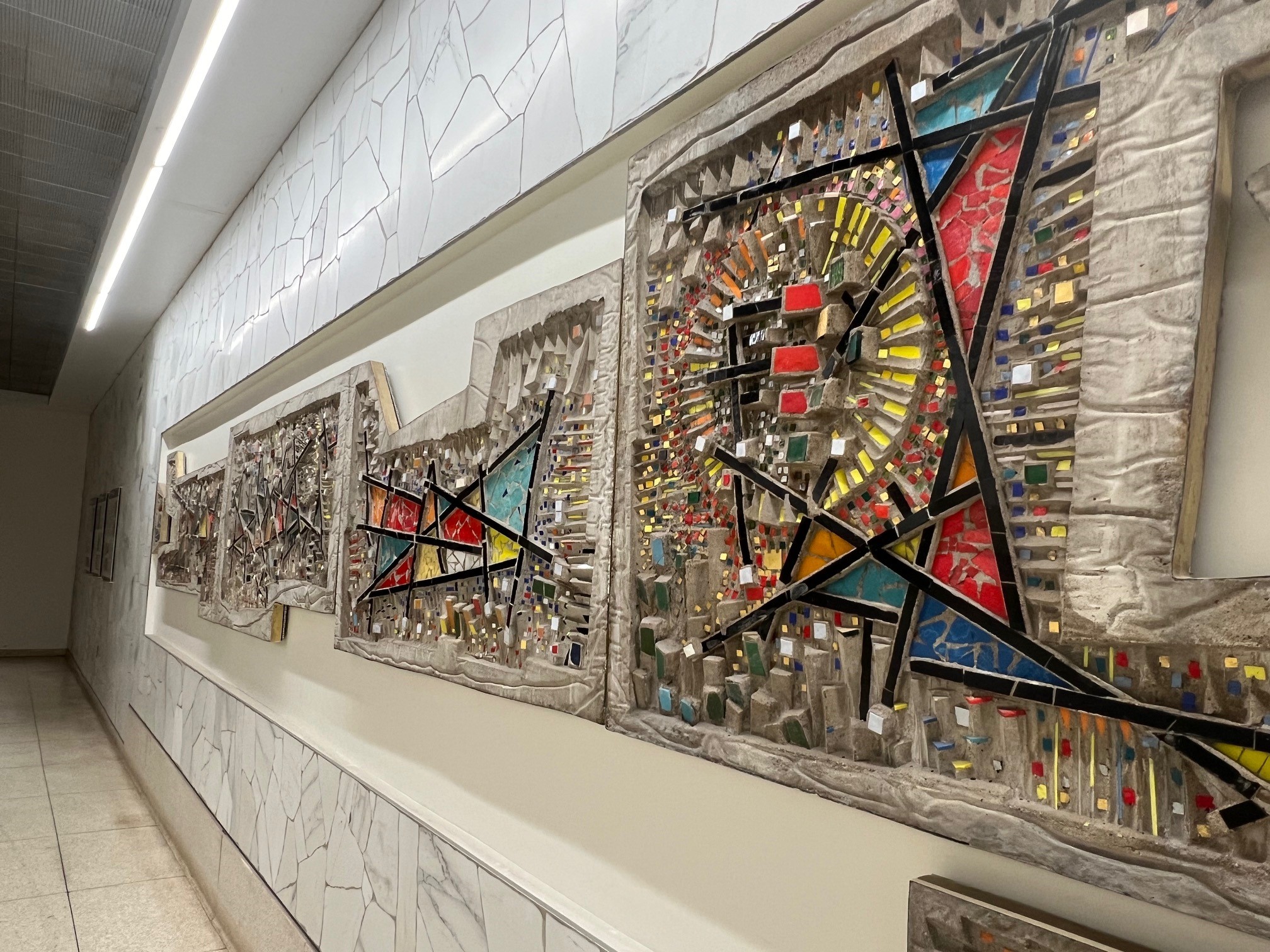
The Mosaic Tunnel by Cantini was completed and first installed in 1964. As a result of the Section 106 process, it was relocated for appreciation by future generations in 2024. Photograph: Barbara Frederick.
Some of our readers may recall past blogs on the life and work of Virgil Cantini and efforts to save one of his larger public works projects, known as the Cantini Mosaic Tunnel. This post recounts the seven-year story of this very successful preservation outcome that can be credited to teamwork and the extraordinary efforts made by consulting parties to the Section 106 process.
The Undertaking
In 2015, the Sports and Exhibition Authority of Pittsburgh and Allegheny County (SEA), in partnership with the City of Pittsburgh and the Pennsylvania Department of Transportation (PennDOT), was awarded a Tiger VIII grant from the Federal Highway Administration (FHWA) to construct the I-579 Cap Urban Connector Project (Cap).
The Cap would create a new 3-acre park structure spanning I-579 near downtown Pittsburgh. The Cap would connect the Lower Hill residential neighborhood to Downtown, re-establishing a connection destroyed by a 1950s Urban Renewal project and the construction of I-579. Due to the use of federal funds for the project, it was considered an undertaking that triggered the Section 106 review process.
Original plans for the Cap project called for the closure and burial of a pedestrian tunnel housing a public art installation created by Cantini in 1964. The Mosaic Tunnel is composed of 28 abstract sculptural mosaic panels. Consideration was given to saving select panels for incorporation into the public art program for the Cap, but the idea was later dismissed.
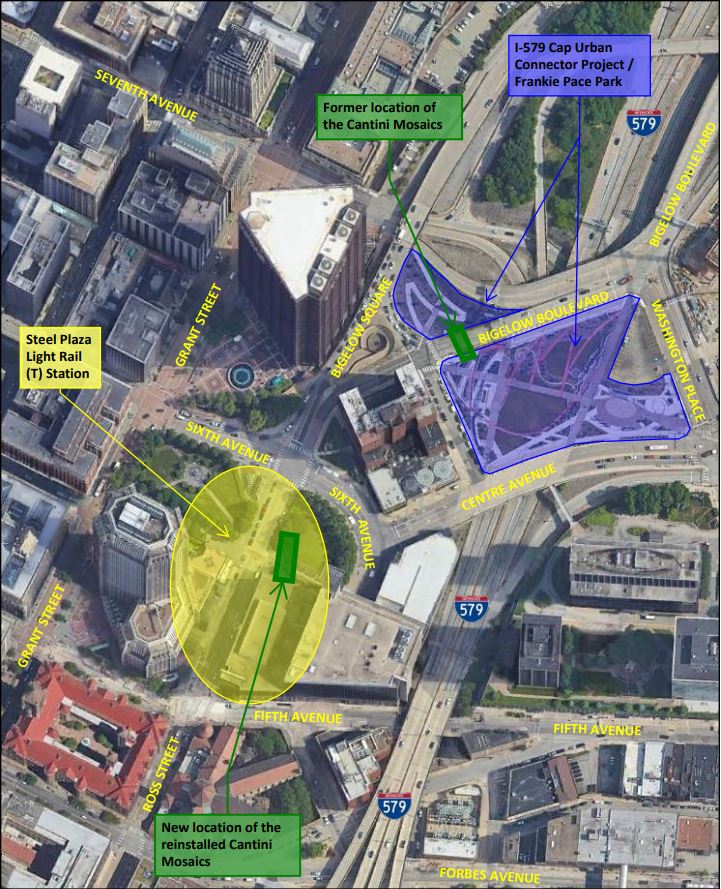
This map shows the original and current location of the Mosaic Tunnel. Source: PA SHPO files.
Identification of Historic Properties
Initially, the project sponsors, through PennDOT, determined the Cantini work was not eligible for listing in the National Register of Historic Places, and that no historic properties would be affected by the project.
In September 2017, interested local preservation and public art advocates alerted the PA SHPO to the history and significance of the Mosaic Tunnel and requested it be preserved in its entirety. Experts in art history, history, architecture, architectural history, planning, and Italian-American history all weighed in on the importance of Virgil Cantini, and the Mosaic Tunnel as a significant example of his work. They noted the Mosaic Tunnel was among the first public works of its kind in the United States in its design, installation, and scale.

This photograph shows the original location of the Mosaic Tunnel. Photograph: Brittany Reilly.
The consulting parties were vigilant in their efforts to ensure the Mosaic Tunnel was recognized as an important expression of mid-20th century modern public art. They brought the work of Virgil Cantini and the threat to the Mosaic Tunnel to the public’s attention through a variety of media including YouTube videos, registration of the work on Docomomo’s website, a presentation at the Statewide Conference on Heritage, numerous stories in the local press, and tours of the Mosaic Tunnel .
Accordingly, PennDOT on behalf of FHWA, reopened consultation on the Cap project, and twelve local advocates signed on as Section 106 consulting parties. The consulting parties’ knowledge and persistence also resulted in inclusion of the pedestrian tunnel in the boundary of the historic resource.
Documentation provided by the Italian American Program of the Senator John Heinz History Center showed Cantini consulted on the tunnel design, which was integral to the design of the mosaics. Inclusion of the pedestrian tunnel as a character defining feature of the artwork had a profound effect on the artwork’s new home.
Resolution of Adverse Effects
After considering the views of consulting parties and the documentation they provided, PennDOT and FHWA, with concurrence by the PA SHPO, determined the Cantini Mosaic Tunnel was eligible for the National Register, and that the Cap project would have an adverse effect on the artwork.
In a series of bi-weekly meetings throughout 2018 and 2019, the consulting parties, PA SHPO, and city, state, and federal agencies explored how to minimize, mitigate, or avoid the adverse effect. As a result of the consulting parties’ commitment of time and expertise, a Programmatic Agreement was developed to outline the careful removal, storage, and reinstallation of the mosaic panels in a new location.
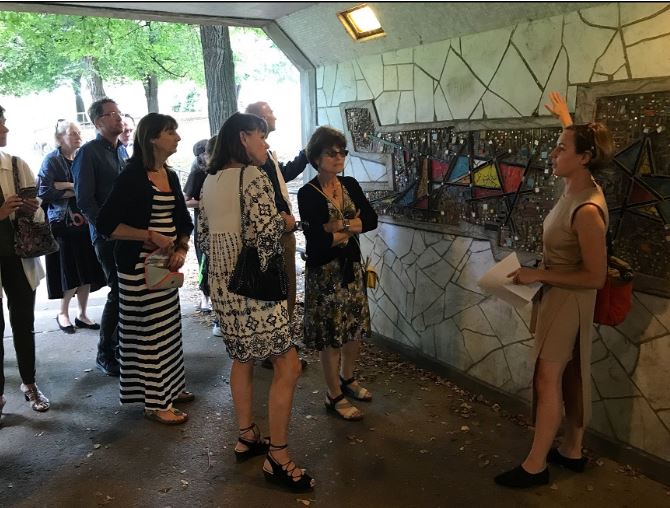
A 2017 tour to bring public awareness to the murals, led by Brittany Reilly. Photograph: Jayne Reilly.
With oversight by the consulting parties, in 2019 the panels were successfully removed by the SEA. The panels were stored by the City of Pittsburgh in a controlled environment until they were shipped to a conservator who made repairs, remounted all 28 mosaic panels, and cleaned and replaced missing tesserae (individual mosaic tiles).
In the spirit of collaboration that permeated the Section 106 process, most of the missing tesserae were replaced by materials provided by the family of Virgil Cantini.
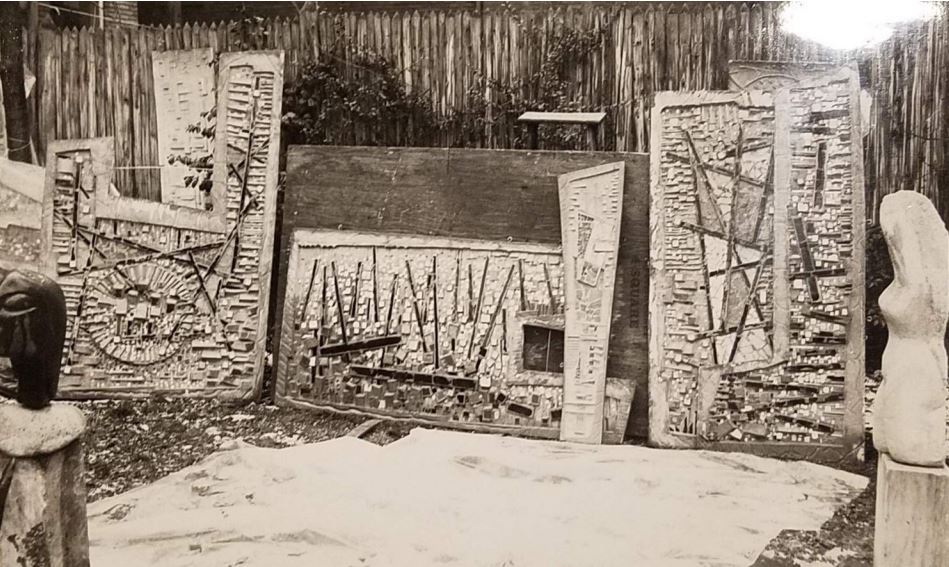
This image of the mural panels awaiting installation in 1964 is found in the archives of the Heinz History Center.
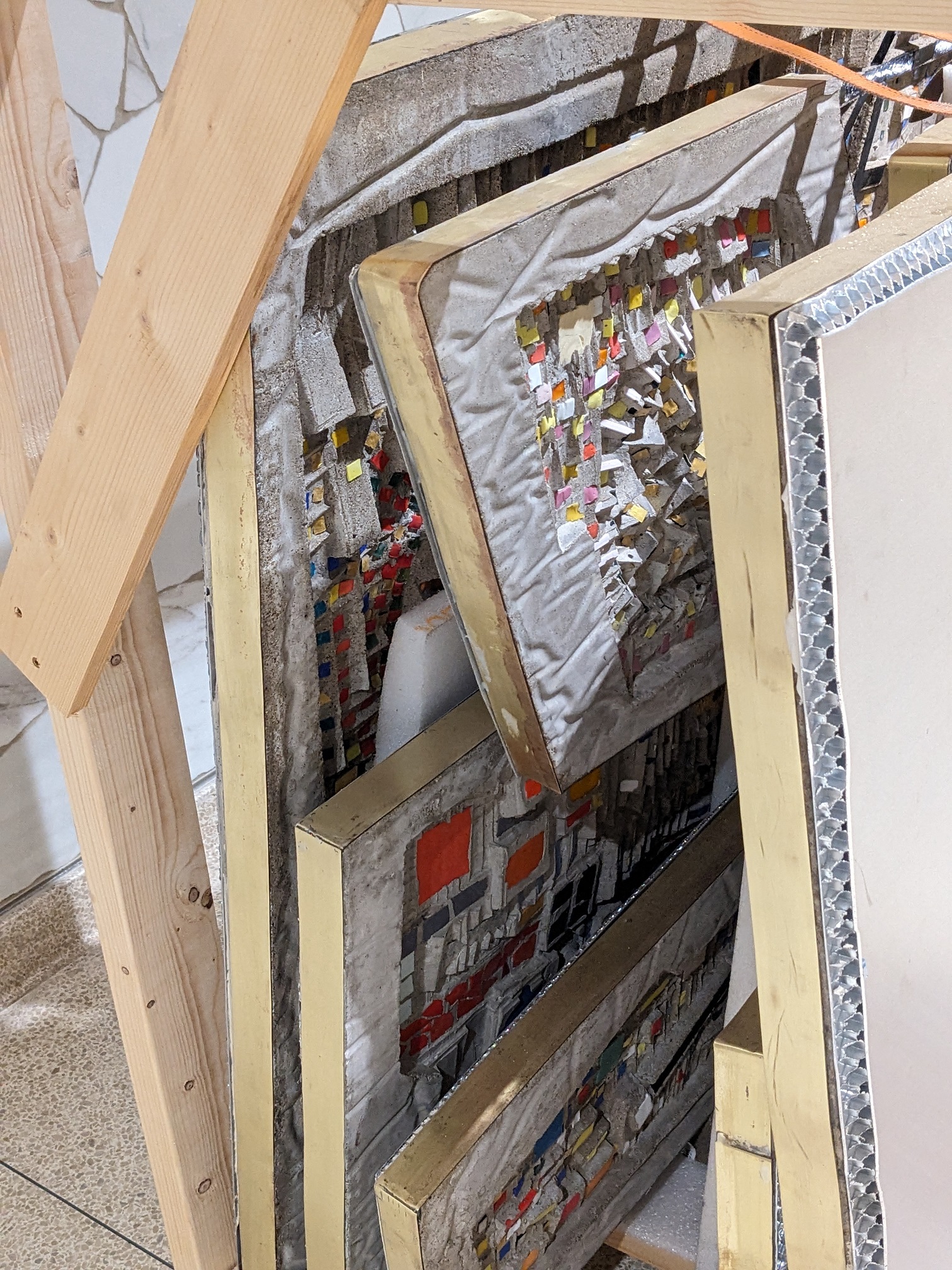
Conserved murals panels with applied honeycomb backers awaiting installation. Photograph: Laura Ricketts.
Several locations were considered by the consulting parties for relocation of the artwork. The final destination, a pedestrian corridor in the Pittsburgh Regional Transit Steel Plaza T Station in Downtown Pittsburgh, most closely adhered to the dimensions of the original tunnel. The Steel Plaza station is also just over 200 yards from the original location of the pedestrian Mosaic Tunnel.
In preparation for the reinstallation of the Mosaic Tunnel, numerous design charettes were held, and the consulting parties guided the selection of new lighting, structure support, and irregular marble-tile work to match the original Cantini design. Interpretive panels were placed alongside the Mosaic Tunnel providing information about Cantini, the creation of the artwork, and the history of the Lower Hill, with content and images provided by the consulting parties.
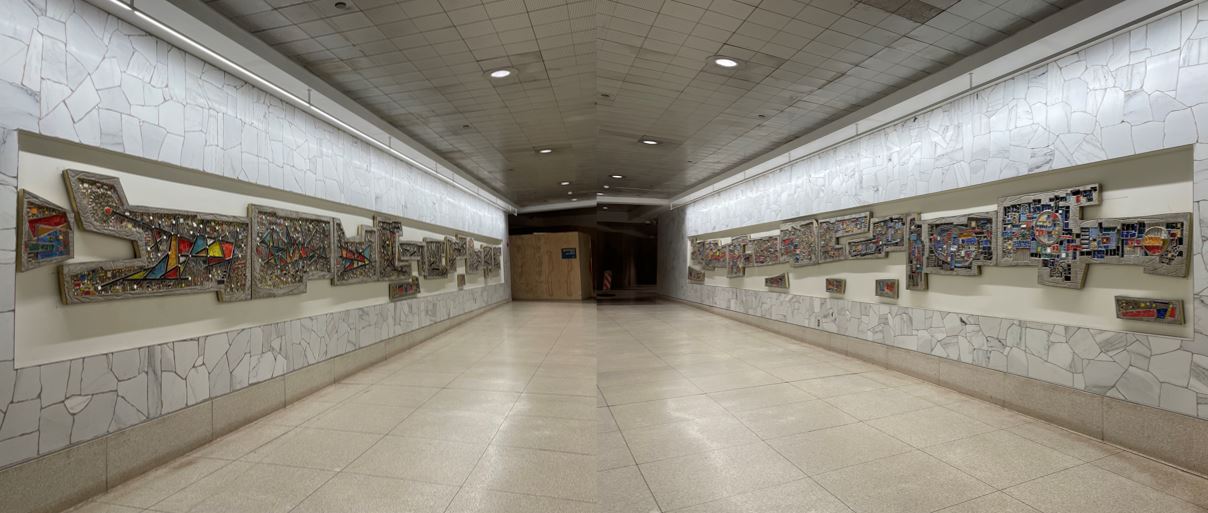
The new location of the murals looks nearly the same as the old location thanks to the efforts of the participants in the Section 106 process. Photograph: Melissa E. Marinaro.
Mosaic Tunnel Publicly Accessible Again
The installation of the artwork in a new public space in Pittsburgh is now complete, and the newly vibrant mosaics are on view to the public, presenting a very similar appearance to when they were first installed.
As part of the conservation process, the panels received a thorough cleaning. The new site and lighting show off the color and brilliance of the tesserae and sculptural concrete. The installation and the interpretive panels are not to be missed.
The most direct access to the corridor is by taking the escalators down from the Steel Plaza T Station entrance on Sixth Avenue (between Fifth Avenue and Centre Avenue.)
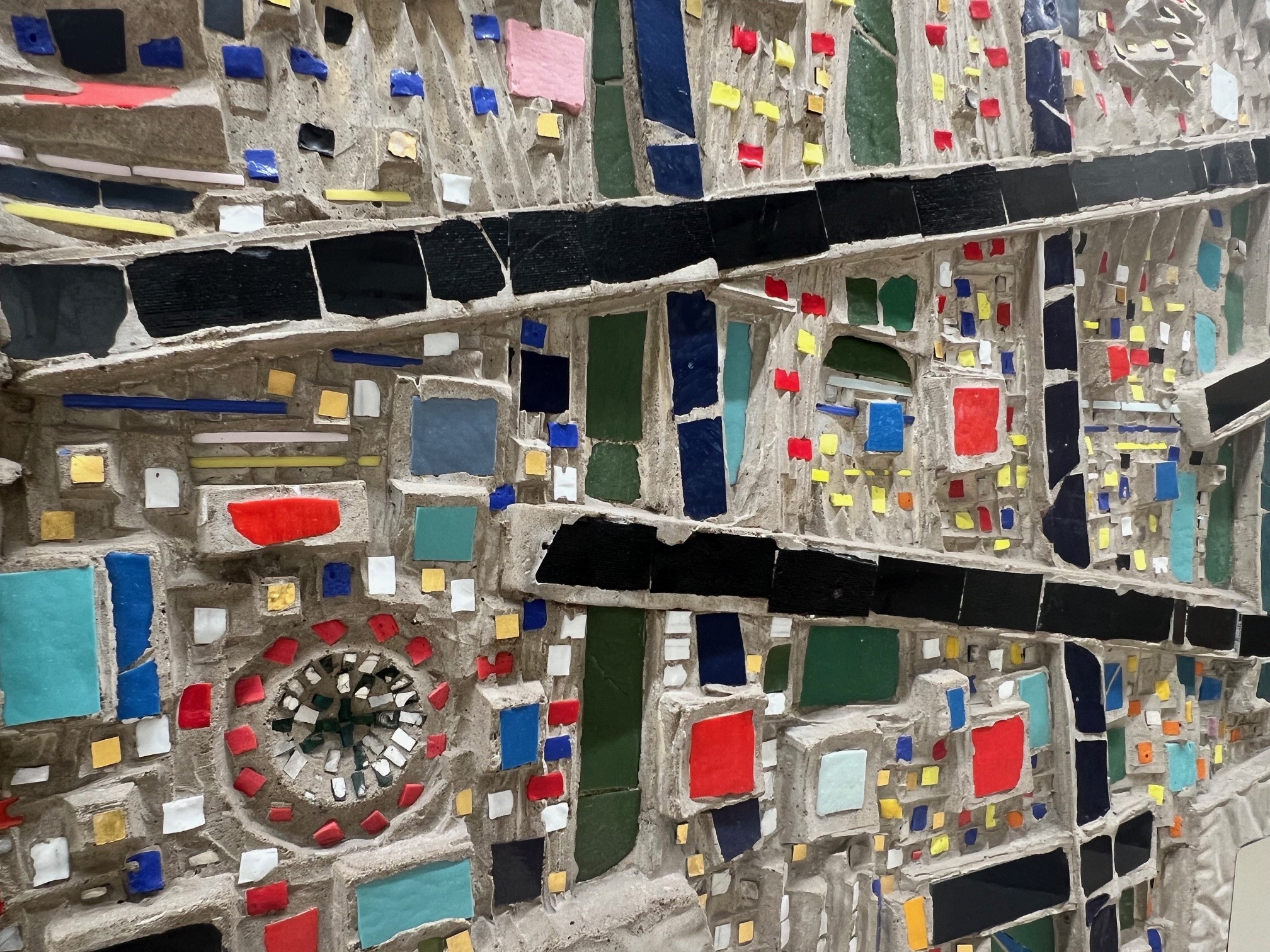
The public art literally shines in its new home. Photograph: Barbara Frederick.
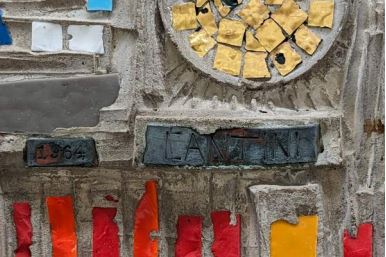
Thanks to recent cleaning and restoration efforts, seven CANTINI signatures are now visible within the Mosaic Tunnel. This signature tesserae is located adjacent to a tesserae with the 1964 completion date. Prior to the cleaning, it was believed that Cantini had only signed the mural in one location. Photograph: Laura Ricketts.
The intent of Section 106 consultation is to ensure there are public benefits embodied in historic preservation as part of any federal undertaking’s planning process. This process works best when the public is actively involved and makes its voice heard. The preservation of the important Virgil Cantini Mosaic Tunnel would not have happened without the efforts of local consulting parties and the willingness of project sponsors to consider their feedback and to work together.
Holden Slattery, a professional writer originally from Pennsylvania who has written past articles about Virgil Cantini, produced a video that tells the story and highlights those individuals and organizations that were critical to the removal, conservation, and relocation of the Mosaic Tunnel: https://youtu.be/9FKWW3Q5kMY?si=LahcIwJQRn84CtpV.
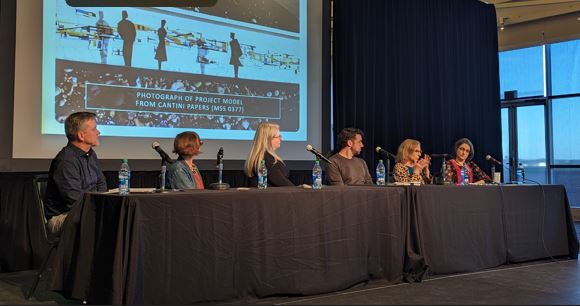
The Heinz History Center hosted a program on efforts to conserve the 1964 mosaic and the work of Virgil Cantini in February of 2024 which included a panel discussion by the consulting parties. Photograph: Dana Cress.
The PA SHPO truly appreciates the teamwork that went into this very successful preservation outcome. Please join us in congratulating all the parties involved in a job well done, with an extra special thanks to:
- Lisa Cantini-Seguin, Virgil Cantini’s Daughter,
- Brittany Reilly, Art Curator and Preservationist,
- Laura Ricketts, Architectural Historian,
- Melissa Marinaro, Heinz History Center, and
- David Anthony, PennDOT District 11-0.
Comment Policy
PHMC welcomes and encourages topic-related comments on this blog. PHMC reserves the right to remove comments that in PHMC’s discretion do not follow participation guidelines.
Commenters and Comments shall be related to the blog post topic and respectful of others who use this site.
Commenters and Comments shall not: use language that is offensive, inflammatory or provocative (this includes, but is not limited to, using profanity, obscene, or vulgar comments); disparage other commenters or people; condone illegal activity; identify the location of known or suspected archeological sites; post personal information in comments such as addresses, phone numbers, e-mail addresses or other contact details, which may relate to you or other individuals; impersonate or falsely claim to represent a person or an organization; make any commercial endorsement or promotion of any product, service or publication.
If you would like to comment on other topics not related to this blog post but related to PHMC, please fill out the PHMC Contact Us Form.

Fantastic outcome. Can’t wait to see it in person. Thank you all!!
There are many lessons to be learned from this success story. Some of the lessons relate to how advocacy occurs in the community and local government. It’s not always easy to challenge those in power. There were many naysayers and criticism from city government and the Hill community. If it were not for Section 106 and support from PHMC, the cantini work would have been buried. The grass roots tactics in media and letter writing were needed to even get attention to the issue. If it were not for a tour led by Brittany Reilly, we would have missed this opportunity. The advocacy that followed was difficult and demonstrates why strong local preservation organizations are needed.